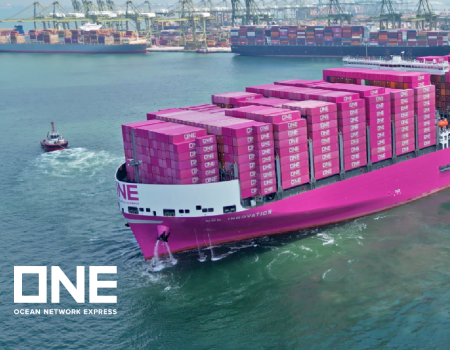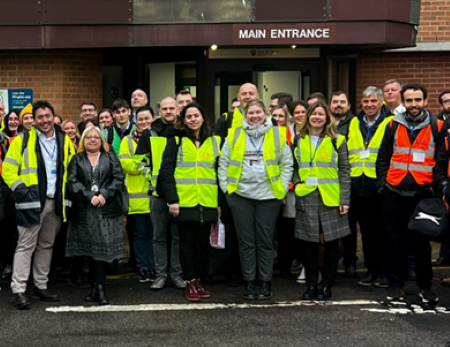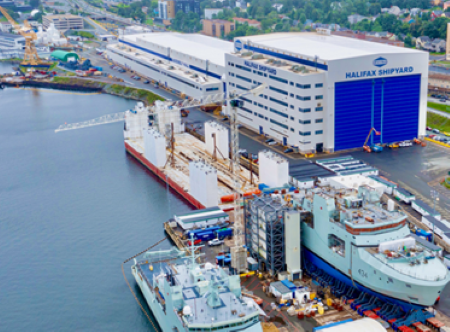 Case study: Schneider Expedited Services Team and a leading U.S. consumer electronics manufacturer
Case study: Schneider Expedited Services Team and a leading U.S. consumer electronics manufacturer
In today’s freight environment, shippers know nearly any commodity is at risk of being compromised in transit by sophisticated thieves. Of course, if you’re shipping trailers filled with new-model mobile phones, you can almost guarantee your product will be a target. This was exactly the case for one of the world’s largest mobile phone manufacturers.
This consumer electronics manufacturer identified a need to revise their current security policy and procedures to keep up with latest criminal activity and trends. In doing so, a gap with their providers was not able to be closed. The company turned to Schneider National, looking for a more stringent security process that would ensure that high-value shipments could travel from their distribution centres to the final destination – safely and securely.
Trucks
Schneider’s Expedited Services Team joined forces with the company’s security team and put its industry-leading security protocols to work, immediately deploying a series of solutions to tighten security within their supply chain.
The manufacturer’s freight began travelling only on trucks with team drivers at the wheel, a move that drastically reduces freight vulnerability simply because the load is rarely at rest. Teams received special security briefings before starting a high-value load assignment, reminding them to be keenly aware of their surroundings at all times and reviewing standard security procedures, including:
Having a full tank of fuel when arriving for a delivery and avoiding breaks in the first 250 miles (even the most persistent thieves will not usually follow a load this long).
Stopping only at secure locations, including Schneider’s network of 35 facilities that are equipped with advanced security technologies and monitored 24/7.
Communicating with dispatch at each stop and inspecting equipment to confirm that the load is intact.
Deploying untethered GPS trailer tracking.
Sending weekly security messages to keep drivers informed about truck stops that had recently been hit by thieves and help drivers plan safe and secure routes.
These techniques may sound like common sense, but it takes a company that values safety first and always, as Schneider does, to turn common sense into common practice and lock down security for shippers. In addition to relying on smart, savvy drivers, Schneider’s Expedited Team utilised the latest in technology to keep freight safe. Its trailer tracking system continuously monitored each of the company’s trailers on the road, sending alerts when a trailer door had been opened or had been otherwise compromised.
This technology can also determine if a trailer is loaded or empty, and for customers who want to imbed covert tracking capabilities into the actual product being moved, Schneider can monitor for irregularities and receive alerts when the freight itself is altered or disturbed.
Railroads
The growth of intermodal freight movements means more thieves target the railroads, as well. If managed correctly, freight can move securely and safely via this mode.
Load tender
An intermodal move starts the same way as a truckload move — with a customer sending the load information to the carrier. But the way to keep an intermodal load secure differs drastically from its counterpart mode, and those differences kick in almost immediately.
When the load is tendered, the carrier should begin communication with its railroad providers about the requirements for the particular load. Carriers should have procedures in place with rail providers for high-value loads. When containers arrive at a rail yard, they are parked in a gated, well-lit area within eyesight of the yard’s office. The load receives a security seal within 60 minutes of arrival and railroad security personnel inspect it every 3–4 hours. The rail provider also places a high-security lock on the container and follows a similar protocol.
Make sure to specify that the load travels in a container instead of a trailer, which is more vulnerable. Trailers on rail cars are easier targets for thieves as they balance on the rear of the trailer to gain entry through the doors.
Pick-up
When you ship via intermodal, you first have to get the load to the rail yard. This adds another layer of complexity that must be addressed with new layers of security.
The carrier should use its own equipment to pick up the load and dray it to the rail yard. A third-party provider should not execute the dray portion of the move. By adding another party into the mix, you add another handoff, another driver, another variation of safety and security protocols, and a greater level of risk to your shipment.
The dray move should go directly from the shipper to the railroad, and it must be a same-day move. The driver should have enough fuel to make the trip. In case of an emergency, the carrier should provide the driver with a safe, secure facility at which to stop.
Transit
Rail shipments often move more slowly than truck, making them ripe for the picking by opportunistic thieves. Therefore, special procedures are called for to make sure the container stays safe while in transit.
When possible, the load should sit in the bottom position of the well car (with other containers on top of it) during the railroad portion of the move.
Along the route, the railroad provider should have checkpoints at which inspectors and rail police check each container to make sure none have been compromised.
If the load needs to move from one railroad to another, again make sure that the trip can be done in one day and insist your carrier uses its own equipment.
Anytime the load is scheduled to in-gate at a rail yard, the rail provider should send a report to the rail police, informing them of its impending arrival.
Delivery
The final part of the intermodal move can be the most dangerous. It’s important to keep security top-of-mind at every point in the move, especially the final miles.
The rules for delivery are similar to the rules for pickup and cross-town rail moves: Carriers MUST use their own equipment and go straight from the yard to the consignee.
Be sure that the carrier you hire trains its drivers to stay aware and alert, since cargo thieves stalk freight coming off the rail. They must know to contact authorities if they even suspect a threat.
Conclusion
Deployment of the enhanced security protocol by Schneider National has made a significant difference within the supply chain for this leading consumer electronics manufacturer:
There has not been one single full-load theft since Schneider was brought on as a carrier in 2006. “We work with a handful of truckload carriers but Schneider consistently meets and exceeds our expectations,” says the Transportation Manager for the manufacturer. “Clearly, we’re thrilled with their ability to secure our freight and get our loads from Point A to Point B, but they also find creative solutions to give us the trucks we need even when capacity might be tight. Their responsiveness and flexibility helps us get our products to market with the speed, security and peace of mind we need.”
Getting merchandise out of inventory and onto store shelves is crucial to any business operation. However, when it comes to the movement of high-value freight like mobile phones, video games, and other consumer electronics it’s often easier said than done.
With Schneider’s Expedited solutions, shippers can rest assured that their products are making that journey quickly and safely. Plus, they eliminate all the costs and headaches associated with lost loads and cargo thefts. When you choose Schneider to haul your most valuable cargo, you’re choosing a carrier that prides itself on its proven Expedited expertise, its professionally trained, dedicated drivers and its 75-year history
of exceeding customer expectations. In other words, you choose a carrier committed to moving your freight securely while taking a bite out of crime.







